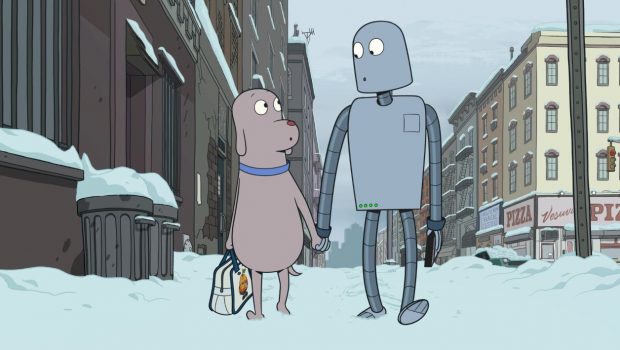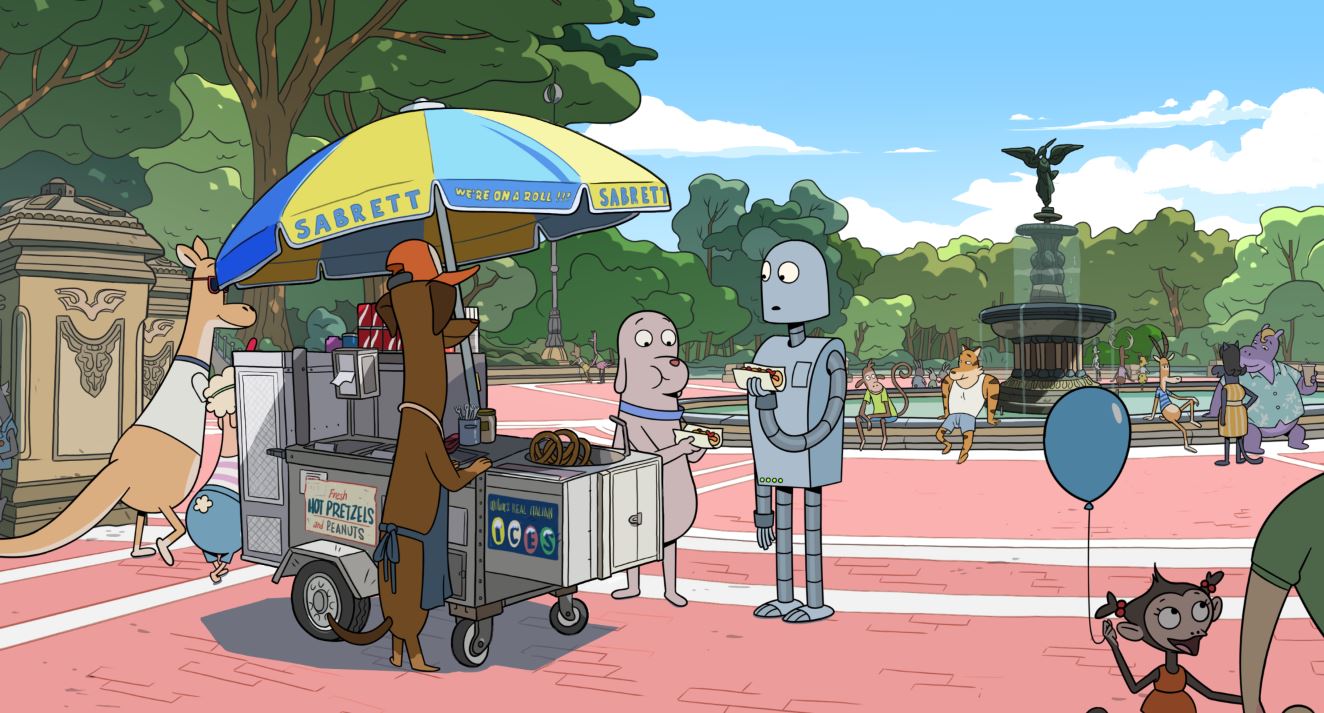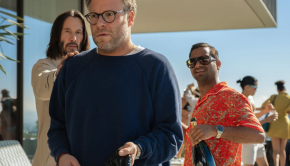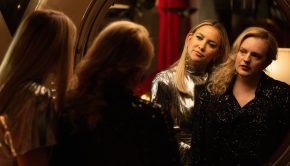Robot Dreams – Film Review
Reviewed by Damien Straker on the 13th of April 2024
Madman presents a film by Pablo Berger
Screenplay by Pablo Berger based on ‘Robot Dreams’ by Sara Varon
Produced by Ibon Cormenzana, Ignasi Estapé, Sandra Tapia Díaz, Jérôme Vidal, and Pablo Berger
Edited by Fernando Franco
Music by Alfonso de Vilallonga
Rating: PG
Running Time: 100 minutes
Release Date: the 11th of April 2024
Robot Dreams is one of the most joyous and beautiful films released so far this year. Though its quality should not be too much of a surprise. The wordless animated feature is directed by Spanish filmmaker Pablo Berger. The sixty-one-year-old has been making acclaimed comedy films since 2003. He would have learned his trade by studying his master’s degree in film at New York University. Coincidently, New York is also where the source material of Robot Dreams is set. The film is based on a 2007 graphic novel by acclaimed visual novelist Sara Varon. In 2008, the American Library Association included Varon’s novel on its list of Notable Children’s Books. Berger first read it in 2010 and was moved by it but waited years to adapt it into a film. He realised what we were all thinking: there was no better time than now for a lonely robot to navigate New York’s social scene.
Berger arranges the film’s action around a funny, simple premise and a colourful setting. It starts in 1980s in an anthropomorphic version of New York City. Dog lives alone in his apartment and watches his neighbours spending time together. Lonely, he decides to do the next best thing: he orders a robot companion he sees advertised on TV. Once assembled, Dog and Robot immediately become friends and spend all their time together. They eat, go for walks, and even rollerblade to the song ‘September’ by the band Earth, Wind & Fire. A complication arises though when they spend the day at the beach. Robot can swim in the water. However, when he returns to the sand, he is unable to move. Dog cannot move him in time before the beach closes for months. He fails to break in at night and the city’s bureaucrats are no help either. Over time he starts meeting other people, including a female duck who teaches him how to fly a kite and fish. Meanwhile, Robot has dreams about the possibilities of reuniting with Dog, being replaced by another robot, and other funny little psychedelic imaginings.
The film’s most distinguished asset is arguably how its audio-vision is implemented. Adapting the graphic novel with 2D animation instead of CGI images is an absolute godsend. There is not one frame throughout this 100-minute film that is lacking humour, colour, and detail. In particular, the way the animals are portrayed is hilarious. A kangaroo wearing sunglasses and an elephant with a turban driving a taxi are two visual highlights. If you look closely during an early train scene, one of the characters has a Mars chain around his neck, which is a reference to filmmaker Spike Lee. The sheer number of clever visual gags that populate the crowded New York streets is staggering and enjoyable. The animation also expresses gentler emotions too. The dark shadows of Dog’s apartment are reflections of his loneliness. One can also envision how some shots are lifted from the pages of the graphic novel. For example, there is a great long shot of the beach covered in snow with a Ferris wheel lingering in the background. Perhaps the shot selection infers the widening emotional gap between Robot and Dog. Evidently, Berger’s technical choices from the drawings to the colour are skilful in how they evoke humour and feelings.
The sound design is as important to the film’s engineering as its colourful images. There is no dialogue, which is refreshing for an animated feature. This stylistic choice is also thematically pivotal. The characters’ faces are so expressive in their eyes that there is no need for words. The subtraction of dialogue is also another way of showing loneliness throughout New York. It could be reflecting how people in large cities prefer to live on their own rather than connecting and communicating with strangers. For example, rather than saying goodbye, a character sends Dog a postcard telling him they’ve moved away. Another substitute for dialogue is the film’s toe-tapping soundtrack. Robot Dreams makes particularly great use of the song ‘September’. It is nostalgic for the main characters and audience. It also spins the film’s action into of all things a musical. No more is this apparent than in an incredible dream sequence. There is a wonderful surprise where the third wall is broken in a loving tribute to The Wizard of Oz (1939), which Robot and Dog watch together. Clearly, Berger has made all the right decisions with the film’s technical choices. The sound and images develop the anthropomorphic world in exciting, funny ways and express the main characters’ longing and isolation.
Robot Dreams’ screenplay traces a strong message around memories and the meaning of friendship. The script’s thesis is that anyone can spend their life reminiscing about past glories. However, the most important people exist in the present day. Robot’s inability to move from the beach infers an emotional stagnancy experienced by those who feel alone but cannot leave behind successful friendships or relationships. The conflict is shown through his imaginings where his hope of reuniting with Dog is dashed by being replaced by someone else. In these dreams, young viewers might have a bit of trouble determining what is real and imaginary. They meld together but wisely the film lets viewers determine it on their own. There is a funny moment where Robot imagines seeing Dog with someone else and his replacement glares at him in passing. The idea of being forgotten is also crucial to the film’s science fiction themes. Robot’s development is how he shifts from imitating actions around himself to developing autonomy and consciousness. The change is prevalent in the film’s climax where he makes a critical personal choice that highlights this personal growth. The story’s findings around friendship are deeply etched in the development and change of its two protagonists.
The film is enormous fun that anyone should be able to enjoy. It is built around a funny premise that many people will find relatable. The recognition in the story is why the film succeeds. The animated world is anthropomorphic but built around truths and relationships. Audiences will find the emotions of loneliness and friendship touching and honest. Furthermore, the entire film marks a strong technical achievement. Berger’s story is thoroughly elevated by the beautiful, detailed animation and energetic soundtrack. For anyone interested in modern animation or seeking a film with feeling and humour this is one of the first movies of 2024 that is not to be missed.
Summary: For anyone interested in modern animation or seeking a film with feeling and humour this is one of the first movies of 2024 that is not to be missed.








